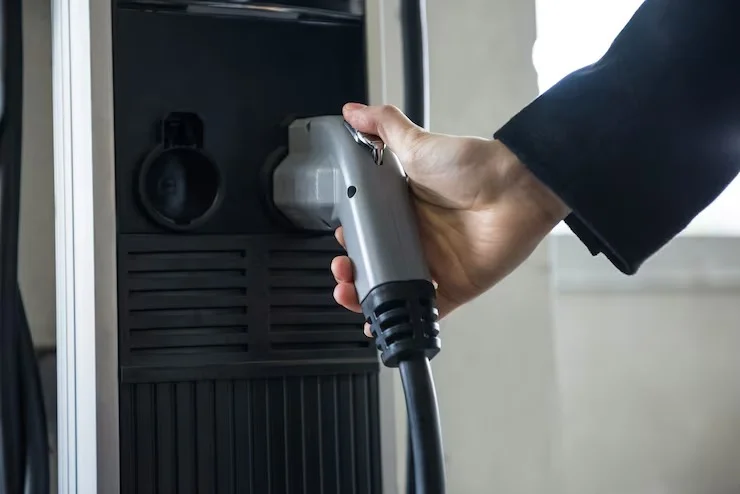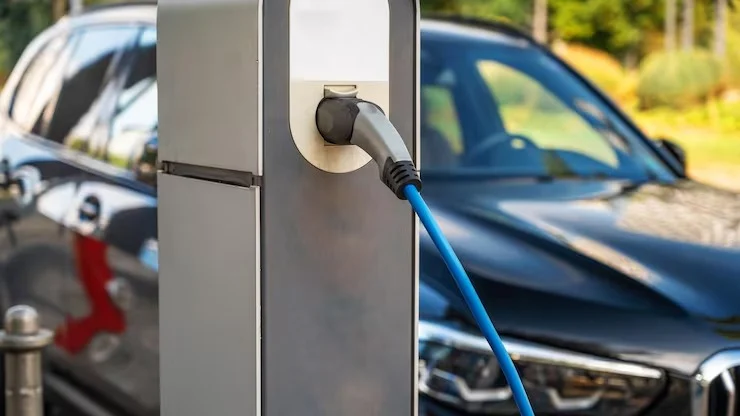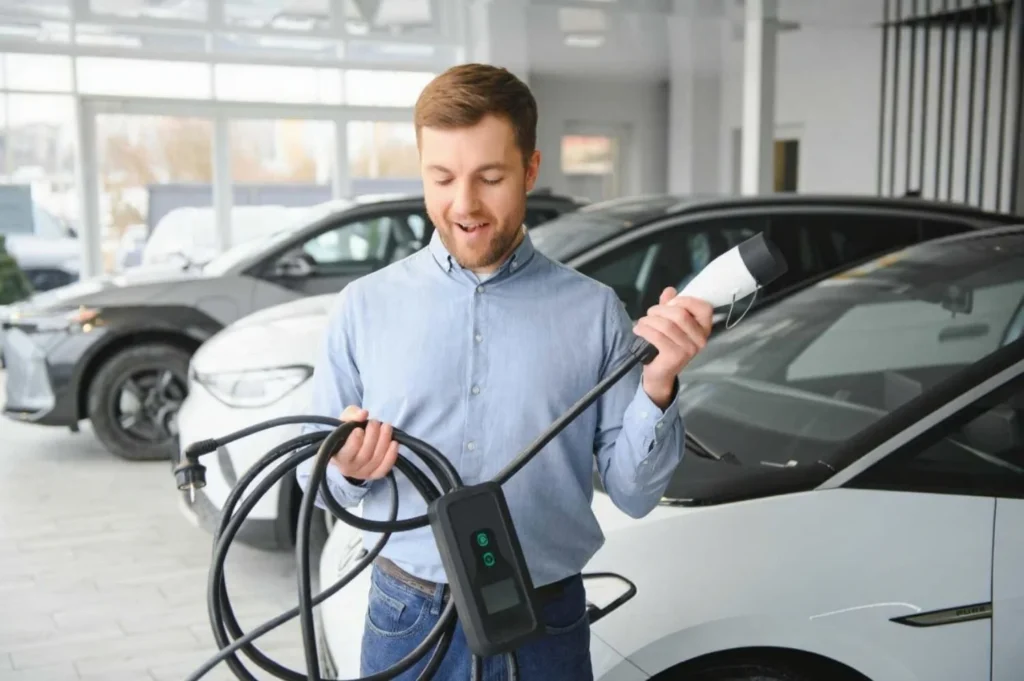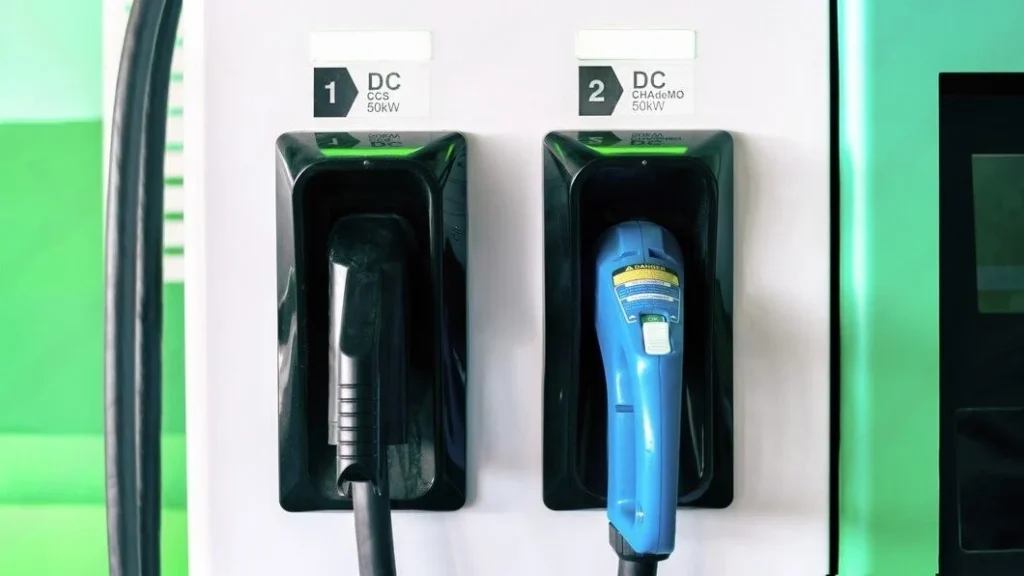Breaker sizing for EV charger installation is perhaps one of the critical safety issues for electric vehicle (EV) owners. With more EVs being bought in 2025, the demand for adequate home charging setups is soaring.
Choosing the correct circuit breaker and wire size of a EV charger is about more than just performance. T’s about ensuring your home and vehicle are safe from fire hazards and the potential for electrical overloads.
If you’re wondering, “What size breaker for EV charger?”, here is a detailed explanation. Read further to learn about breaker sizes and wire requirements for common charger amperages and a bit about NEC compliance, giving you the expert knowledge needed for safe installation.
Why Breaker Size Is Important for EV Chargers?
If there’s an electrical system, it’s expected to have a circuit breaker that breaks the power during times of overload or fault. Suppose you have installed an EV charger with a breaker that is smaller than the charger’s value; it may keep tripping. If it’s larger than it should be, in times of real danger, it won’t trip — this constitutes a great fire hazard.
According to the National Electrical Code (NEC), a continuous load (and EV charging is considered as one) shall not exceed 80% of the rated capacity of the circuit.

General NEC Rule for EV Charging
Determining your minimum breaker size is simple.
Charger amperage ÷ 0.8 = Minimum breaker size
Working example: 40 amps divided by 0.8 = 50 amps. Hence, your breaker should be rated for 50 amps to avoid being overloaded during lengthy charging.
What Size Breaker for Level 2 EV Charger?
A Level 2 Electric Vehicle (EV) charger works with 240 volts of power and, depending on the model, draws 16 to 50 amps of current. So, what size breaker for a Level 2 EV charger is appropriate?
Here is a quick list:
| Charger Amperage [Amperes] | Required Breaker Size [Amperes] | Common Copper Wire Gauge [AWG] |
| 16 | 20 | 12 |
| 24 | 30 | 10 |
| 32 | 40 | 8 |
| 40 | 50 | 6 |
| 48 | 60 | 6 |
| 50 | 70 | 4 |
An exception to this would be when the breaker size must be the next standard size and confirmed by an electrician.
What size breaker is required for a 32-amp EV charger?
In the installation of a 32-amp EV charger, you need a 40-amp breaker.
Formula: 32 ÷ 0.8 = 40 amps
Breaker: 40A
Wire: 8 AWG copper
This is a common setup for chargers like the Juicebox 32 or ChargePoint Home Flex.
What Size Breaker for 40 Amp EV Charger?
A 50-amp breaker is required for a 40-amp charger.
Formula: 40 ÷ 0.8 = 50 amps
Breaker: 50A
Wire: 6 AWG copper
Charging speed and system compatibility go well together with this.
What Size Breaker for a 48 Amp EV Charger?
In principle, a 48-amp EV charger will want a 60-amp breaker.
Formula: 48 ÷ 0.8 = 60 amps
Breaker: 60A
Wire: 6 AWG minimum and (4 AWG preferred for long runs)
The draw is big, so make sure your panel can take on that extra load.
What Size Breaker for a 50 Amp EV Charger?
Going by the number, a 50-amp EV charger needs a 63 Amp breaker. Since it’s not available, a 70 Amp breaker is used instead.
Formula: 50 ÷ 0.8 = 62.5 → round up to 70A
Breaker: 70A
Wire: 4 AWG copper
Make sure your wire, breaker, and panel are rated for these parameters.

What Size Breaker for 240V EV Charger?
Most Level 2 chargers are 240V, but voltage alone does not decide breaker size. Calculations must be made with regard to amperage draw.
| Charger Amperage [Amperes] | Required Breaker Size [Amperes] | Common Copper Wire Gauge [AWG] |
| 16 | 20 | 12 |
| 24 | 30 | 10 |
| 32 | 40 | 8 |
| 40 | 50 | 6 |
| 48 | 60 | 6 |
| 50 | 70 | 4 |
So, when questioning “what size breaker for a 240V EV charger,” look at the current draw, not voltage.
Getting the Wire Gauge Right
Once the breaker has been picked, choose a wire gauge that can carry the current; this is a copper wire gauge:
Pro tip: Pick a larger gauge for a 50-feet-plus run to cut voltage drop.
Consider Voltage Drop in Long Cable Runs
If your EV charger is distant from the main panel, say in a detached garage, voltage drop would be an issue. And this causes:
- Loss of efficiency
- Slower charge
- Overheating and breakers tripping
NEC recommends not allowing a voltage drop exceeding 3% in branch circuits. So, a longer distance means:
| Amp | Standard Gauge | Long Run Gauge |
| 40 | 8 | 6 |
| 50 | 6 | 4 |
| 60 | 6 | 3-4 |
An electrician can calculate your exact drop, depending on your layout.

Dual EV Chargers on One Breaker: Is It Safe?
Many houses now have two EVs. So, can you install two chargers on the same breaker?
Yes — but only if:
- Both chargers support load sharing
- They’re configured to never exceed the breaker’s capacity
Example
- Two Tesla Wall Connectors set at 48A can share a 60A breaker
- Load management will ensure they alternate charging each EV or charge each at half power
- Without smart load share, each charger is required to have its own circuit.

Don’t DIY This Without Permits
An EV charger installation is not a DIY project unless you’re a licensed electrician.
Reasons to hire a pro:
- Permits have to be obtained in most areas
- Compliance with the code has to be ensured
- Improper sizing may invalidate your home insurance
- Any mistake might cause a fire or electrocution
Hire an electrical contractor who has a good knowledge of NEC Article 625 for EVSE installations.
Breaker Compatibility with Panels
Before getting your breaker, make sure it fits your electrical panel brand. Using mismatched breakers is hazardous and most time illegal.
Common brands
- Square D
- Siemens
- Eaton
- GE
- Murray
Pro tip: Take a picture of your panel before you head to the hardware store or place an order online.
Future-Proofing: Should You Oversize Your Breakers Now?
Along with increased EV battery capacities and higher charging speeds, it pays to think ahead while installing your EV charger. Even if your charger pulls 32 amps now, you may want to up the charge rate to 48 or set up a dual-EV charging installation in the next couple of years.
Future-proofing can save you hundreds or even thousands of dollars in reinstallation expenses. Wire thicker than necessary (say, 4 AWG instead of 6 AWG) and bigger conduit can be put in place at the initial installation, allowing upgrades to the breaker and charger without going through wall tearing or trench digging.
You shall not oversize the breaker for a charger drawing less current as per the code. To begin with, put a breaker rated for the current load. But think about the panel and wiring and whether they can take future upgrades. If your top secondary service capacity is about to be filled up (like 100A or 150A), think of upgrading your panel to 200A or putting in a subpanel. This will give you the extra capacity for your solar, battery storage, or even a second EV down the road.
Working with Local Authorities & Utilities
Your local building department or electrical inspector is paramount in speaking for the approving party of the EV charger installations. Depending on the place you reside, you may be asked to submit an electrical plan, get a permit, and have a final inspection scheduled. In some municipalities, permits for EV chargers may be expedited, but in others, load calculations for the entire house need to be submitted to make sure that the main panel would not be overloaded.
Furthermore, your electric utility can even provide rebates, incentives, or time-of-use rate programs contingent on the proper installation. Some programs stipulate specific breaker or load management configurations to be eligible for rebates.
Utilities need to plan for higher demand on the grid, so where there is limited capacity, you may also have to coordinate the timing of installation. Having a proactive stance, kindly call your utility and local building department even before you buy any equipment. When your breaker, wire, and charger all match respective compliance standards, it will save you tons of time, money, and hassle in the long run!
Summary: What Size Breaker for EV Charger?
| Charger Amperage [Amperes] | Required Breaker Size [Amperes] | Common Copper Wire Gauge [AWG] |
| 16 | 20 | 12 |
| 24 | 30 | 10 |
| 32 | 40 | 8 |
| 40 | 50 | 6 |
| 48 | 60 | 6 |
| 50 | 70 | 4 |
Recap at a glance
Always apply the 80% rule and select the appropriate wire sizing and local code accordingly.
Conclusion
Knowing what size breaker for EV charger installations is more than a technical detail: It really is a matter of utmost safety. NEC-compliant installations ensure anything from a diminutive 32-amp charger to a powerful 48A Tesla Wall Connector runs well and safely.
Here’s what you need to remember for your installations:
- Apply the 80% rule for continuous loads
- Size the breaker and wire properly
- Consider the voltage drop in long runs
- Get a licensed electrician
- Load-sharing chargers work well for houses with two EVs
- A clever cut at today’s planning pays off with many years of safe and efficient EV charging.


